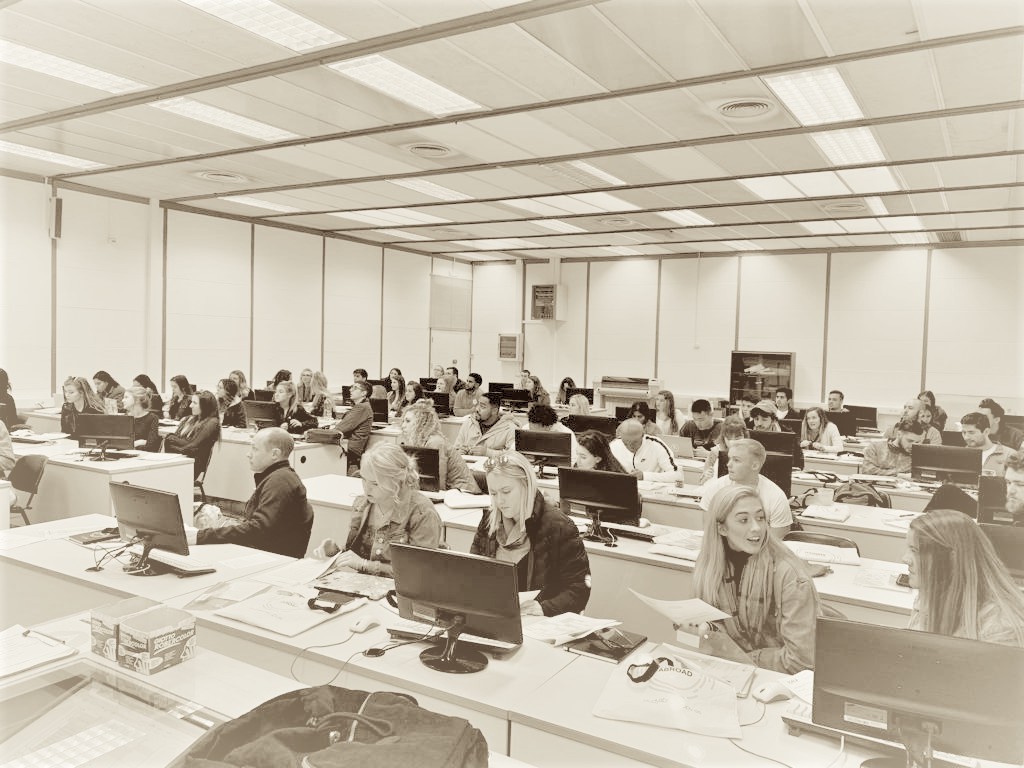
|
|

• Attendance
• Assessments
• Sexual Harassment Policy
• Students With Disabilities
• Academic Honesty Policy
• University Ombudsman
• Statement On Audio And Video Recording
• Syllabus Change Policy
General Physics II
3 Credits | 200 Level | 38 Contact hours
Giancoli, Physics for Scientists and Engineers with Modern Physics, 4th Edition, Vols. 1 and 2.
In this course, an introduction to physics for engineers is done, especially in the field of Eelectrostatics, including conductors and insulators; DC circuits; magnetic forces and fields; magnetic effects of moving charges and currents; electromagnetic induction; Maxwell's equations; electromagnetic oscillations and waves; Introduction to geometrical and physical optics. The presentation of physical principles is generally done inductively, starting from the physical phenomena where they are evidenced, and then give the appropriate mathematical structure that allows you to understand their applications.
The aim of this course, which is a continuation of Physics 1425 and has as a prerequisite the material of that course, is to teach you concepts and understanding of the physical world. Doing problem solving is an important part of this course, and your grade will depend on your ability to understand concepts and to solve problems. An understanding of the material is crucial to your ability in problem solving, as is the acquisition of a set of skills about problem solving. The lectures are oriented towards helping you understand the concepts and how to solve problems. We will perform many demonstrations and solve several examples and problems in class.
To obtain conceptual understanding of physics and problem solving.
To understand and master the basic concepts of the general laws of Electrostatics, including conductors and insulators; DC circuits; magnetic forces and fields; magnetic effects of moving charges and currents; electromagnetic induction; Maxwell's equations; electromagnetic oscillations and waves; Introduction to geometrical and physical optics.
To learn important skills that will be useful in science, engineering and other walks of life: including abstraction, idealization, approximation, and mathematical/conceptual modeling of simple phenomena.
Topic 1: Electric Charges, Forces, Fields, and Energy
Topic 2: Electric Circuits
Topic 3: Magnetism and Magnetic Fields
Topic 4: Time-Dependent Fields and Flux. Maxwell Equations
Topic 5: Waves and Sound
Topic 6: Light, and Optics
EXAM 1 Covering Topic 1 (10%)
EXAM 2 Covering Topic 2 (10%)
EXAM 3 Covering Topic 3 (10%)
EXAM 4 Covering Topic 4 (10%)
GLOBAL EXAM Covering Topic 5-6 (10%) and all the rest (25%)
Final Grade = Attendance_factor * (25% Written Homework + 50% Midterm Exams + 25% Final Exam)
Attendance_factor = minimum (1, Attendance_percentage / 90)
|
